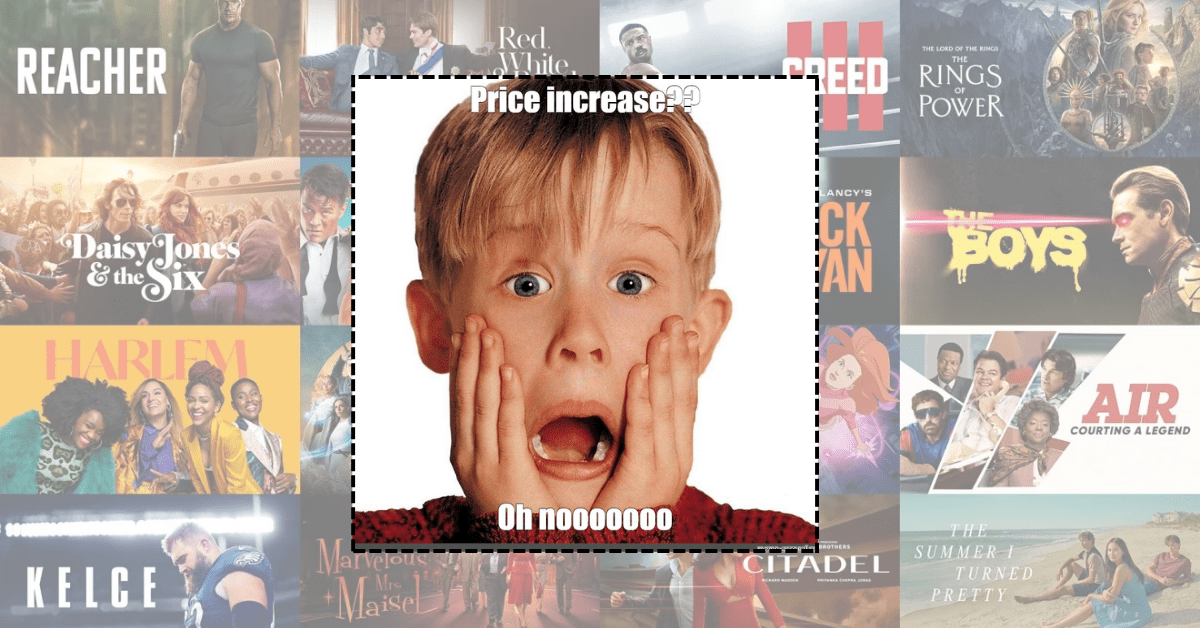Amazon Prime is playing the Digital Shrinkflation
So, Amazon Prime is increasing prices… again! But this time, they’re playing a digital version of “shrinkflation.”
Pretty much every audio and video streaming service has seen their prices rise this year, with Netflix, Disney, and Spotify all announcing double-digit increases to their subscription fees in the last few months.
Yesterday, Amazon announced something similar, introducing a new plan that is $2.99/month more expensive than the current (and only) one. So, where is the news?
- On one hand, this is the second price increase in a row that Amazon has announced for its Prime service in the last 12 months. Amazon already increased prices about 20% less than a year ago. A second increase so close in time brings Amazon Prime’s prices (historically much lower) close to those of their competitors, who’ve been past the psychological threshold of $10/month for some time now.
- More interestingly, this price increase is different from what both Amazon and their competitors have done so far. In reality, the price of the current Amazon Prime subscription is NOT CHANGING. What is changing is the content (and the value) of their plans: starting in January 2024, videos on Amazon Prime will be interrupted by ads unless users opt to spend an additional $2.99 USD/month to upgrade to a new, ad-free plan.
In other words, technically, Amazon is not changing the price of their plan but just its content. Whereas until now Amazon customers could have ad-free content at $6.99/month, it will now cost them almost $10/month to have the same service.
This is the digital equivalent of “shrinkflation,” the well-known retailer’s technique consisting of gradually reducing the amount of content in their products (think sodas, biscuits, etc.) rather than increasing the price tag. This is a subtle technique to increase prices without immediately impacting customers.
Interesting to note how both Netflix and Amazon have leveraged cheaper “ads” plans to support their pricing strategy, although in a very different way:
- Netflix, which has a premium positioning in the market, has increased the price for their customers and added an additional cheaper plan as a safety net to reduce churn. In other words, customers were moved to a more expensive plan and given the option to downgrade to keep their pricing.
- Amazon, which keeps its “budget” positioning, has opted for a different approach: keeping the current price for their customers but giving them the option to pay more to keep the same service.
Two different approaches to tiered pricing that reflect their common willingness to cover different segments of the market, yet with different positioning in the market.
https://www.aboutamazon.com/news/entertainment/prime-video-update-announces-limited-ads
#PriceIncrease #pricingstrategy #AmazonPrime #streaming #pricing

My name is Salva, I am a Product executive, helping tech companies discover, shape, and sell better Products. My work and writing are mainly about subscription models, product pricing, e-commerce/marketplaces, and creating top product organizations.
My superpower is to move between ambiguity (as in creativity, innovation, opportunity, and ‘thinking out of the box’) and structure (as in ‘getting things done’ and getting real impact).
I am firmly convinced that you can help others only if you have lived the same challenges: I have been lucky enough to practice product leadership in companies of different sizes and with different product maturity. Doing product right is hard: I felt the pain myself and developed my own methods to get to efficient product teams that produce meaningful work.

